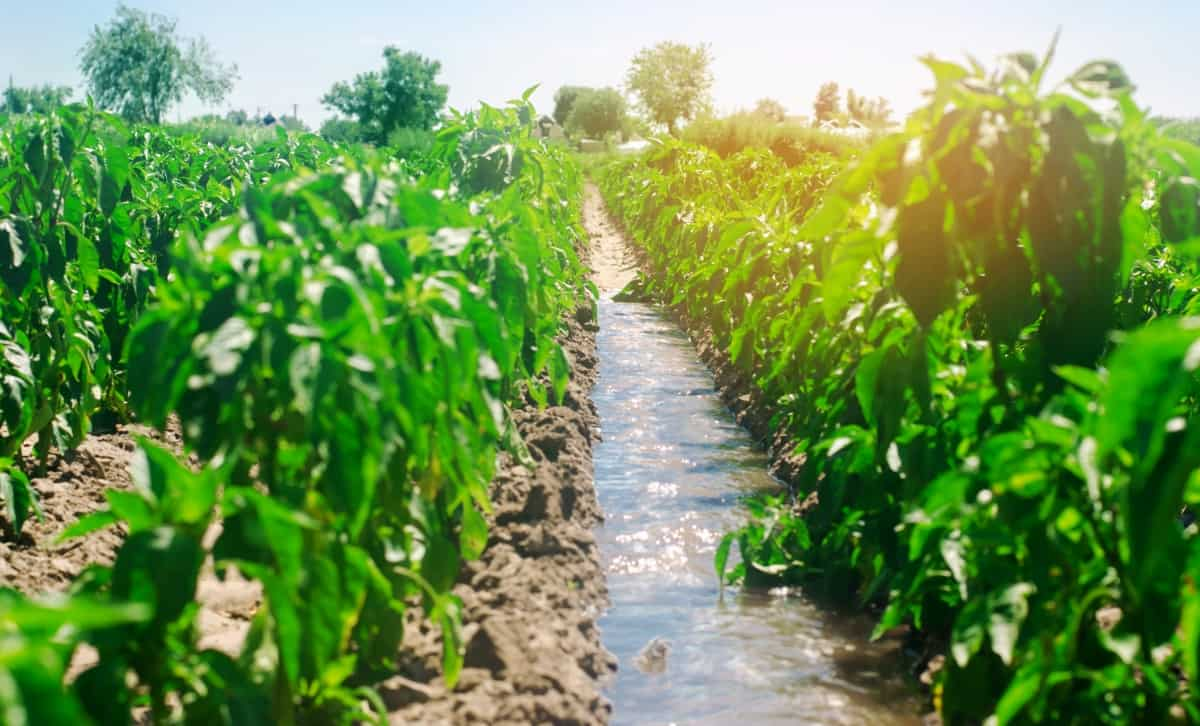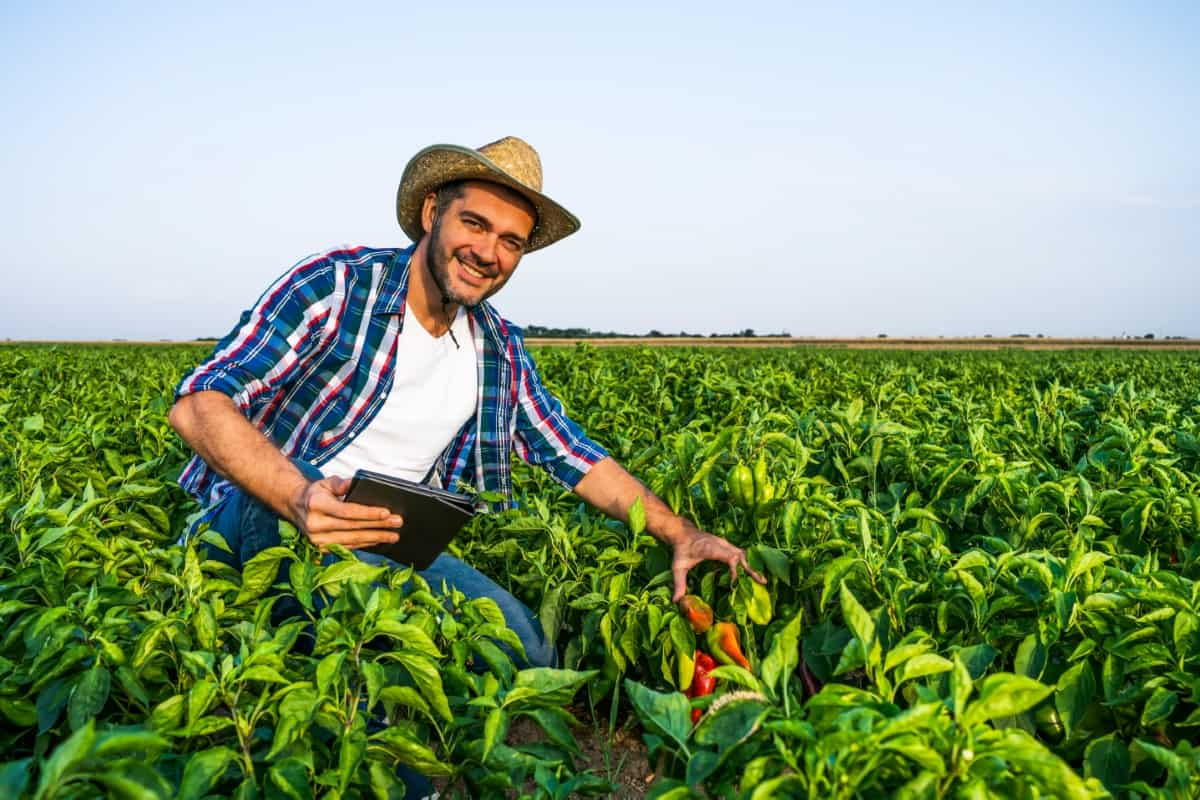If your pepper plant is healthy but not producing any flowers, it can be quite frustrating. If you don’t know how to encourage flowering in pepper plants? The solution is here. Here we will explore the possible reasons behind this issue and provide some tips and solutions to encourage your pepper plant to bloom.

Pepper Plant Healthy But No Flowers
Lack of Sufficient Sunlight: Understanding the Importance of Light for Pepper Plant Flowering
Insufficient sunlight is one of the environmental factors affecting pepper plant flowering. When pepper plants do not receive enough light, they may experience delayed or stunted flowering. The lack of sunlight can disrupt the plant’s hormonal balance, leading to a decrease in flower production and, subsequently, a reduced yield of peppers.
- Ensure that your pepper plants are located in a spot that receives ample sunlight of at least 6 to 8 hours per day.
- Utilize aluminum foil or white plastic as mulch around the base of your pepper plants to reflect sunlight onto the plants, maximizing the amount of light they receive.
- If your pepper plants are grown indoors or in an area with limited natural light, consider supplementing with artificial lighting.
- Regularly prune your pepper plants to remove any dense foliage that may be blocking sunlight from reaching the lower parts of the plant.
Nutrient Deficiencies and Flower Formation in Peppers: Exploring the Role of Nutrients in Promoting Flowering in Pepper Plants
Regularly monitor the plant’s nutrient status; when nutrient levels are inadequate, pepper plants may exhibit stunted growth, delayed flowering, or poor flower production. To correct this issue, apply a balanced fertilizer specifically formulated for pepper plants. These fertilizers usually blend macronutrients and micronutrients to ensure all necessary elements are provided.
Before applying any fertilizer, conduct a soil test to know the nutrient deficiencies in your garden. This will help you tailor your fertilizer application to address the specific needs of your pepper plants. Soil tests can be conducted through local agricultural extension services or specialized laboratories. Don’t overfertilize, which is one of the common mistakes preventing pepper plants from flowering. Due to this, plants will focus on foliage instead of flower production.
Improper Watering Practices: How Watering Habits Affect Flower Production in Pepper Plants
Overwatering or underwatering pepper plants can significantly affect their ability to produce flowers. Overwatering can lead to root rot and oxygen deprivation, inhibiting the plant’s nutrient uptake and overall growth. On the other hand, underwatering can cause water stress, reducing flower production and plant vigor.
To ensure proper watering, consider the specific needs of pepper plants. These plants prefer well-drained soil that drains excess water away, avoiding waterlogged conditions. Watering pepper plants deeply and infrequently rather than shallowly and frequently is recommended. This encourages the development of a deep root system, improving the plant’s ability to withstand periods of drought.
Unsuitable Temperature Conditions: The Impact of Temperature on Pepper Plant Flowering
Pepper plants are warm-season crops that thrive between 21°C and 32°C. However, extreme temperatures, both hot and cold, are the reasons for no flowers on pepper plants. To correct extreme temperature conditions, providing shade by using shade cloth or planting taller crops during peak heat periods can help lower the temperature around the plants.
In case you missed it: How to Grow and Care for Pepper Plants in Pots/Containers: Planting Instructions

Additionally, using mulch around the plant’s base can help regulate soil temperature and keep it within the optimal range. In regions with cooler climates, growers can use row covers or greenhouses to create a microclimate that promotes flower development. These structures can provide protection against cold temperatures and allow growers to extend the growing season.
Insufficient Pollination: Unveiling the Significance of Pollinators for Pepper Plant Flower Development
Lack of pollination in pepper plants can lead to poor fruit set and reduced yields. Pepper plants are primarily self-pollinating, but they can also benefit from cross-pollination by insects such as bees and butterflies. Factors such as a lack of pollinators or unfavorable weather conditions can result in insufficient pollination.
Plant flowers include marigolds, lavender, and borage to attract bees and other beneficial insects. To provide a conducive environment for pollinators, growers should minimize the use of pesticides, especially during flowering periods. Instead, growers can opt for organic pest control methods or targeted pesticide applications.
Overcrowding and Lack of Air Circulation: Addressing the Effects of Plant Density on Flower Formation
When pepper plants are overcrowded, they compete for resources such as sunlight, water, and nutrients. This competition can reduce flower production and hinder proper air circulation around the plants. Without adequate air movement, humidity can increase, creating a favorable environment for diseases and pests. To address the effects of overcrowding, growers should ensure appropriate spacing between pepper plants.
Generally, plants should be spaced around 18 to 24 inches apart in rows, with rows spaced 24 to 36 inches apart. Ensuring pepper plant care for better flower production. Promoting air circulation is crucial to prevent humidity buildup and reduce the risk of diseases. Growers can achieve this by pruning the lower leaves and removing any dense foliage that restricts airflow.
Pruning Techniques to Promote Flower Growth in Pepper Plants: Enhancing Flowering Potential in Pepper Plants Through Proper Trimming
When pruning pepper plants, remove any dead or damaged branches. This not only improves the plant’s overall appearance but also prevents the spread of diseases. Additionally, removing overcrowded branches allows more sunlight and airflow to reach the plant, promoting better flower production.
Pinching is another effective technique for enhancing flowering in pepper plants. It involves removing the main stem and lateral branch tips, stimulating new shoots’ growth. Doing so encourages the plant to produce more lateral branches, resulting in more flowers. Pinching is typically done when the plant reaches a certain height, around 12 to 18 inches.
Pests and Diseases: Identifying and Managing Common Issues that Hinder Pepper Plant Flowering
Disease and pest issues causing a lack of flowers in pepper plants. Some common pests that affect pepper plants include aphids, whiteflies, and spider mites. They can damage the leaves and flowers, leading to a decrease in flower production. Implementing integrated pest management (IPM) techniques, such as using insecticidal soaps or introducing beneficial insects, can help control these pests effectively.
Diseases, such as bacterial spots, powdery mildew, and blossom end rot, can also impact the flowering ability of pepper plants. Regularly inspecting the plants for any signs of disease and promptly addressing them is crucial. This may involve removing infected plant parts, applying appropriate fungicides, or improving cultural practices, such as adequate spacing between plants and proper watering techniques.
Genetic Factors: Understanding the Influence of Plant Genetics on Flower Production in Peppers
Studies have identified several flowering-related genes in peppers, such as flowering locus t (FT) and suppressor of overexpression of constans 1 (SOC1), which are known to promote flowering. Natural genetic variation contributes to differences in flowering time and yields among pepper plants. Furthermore, understanding the genetics of flower production in peppers can help develop molecular breeding techniques. This targeted breeding approach can accelerate the development of new pepper varieties with improved flower production characteristics.
Stress Factors: Investigating Environmental Stressors That Can Inhibit Flowering in Pepper Plants
- The role of temperature and light in pepper plant flowering is crucial. Growers should provide adequate protection, such as shade cloth or frost covers, to mitigate the impact of temperature stress.
- If the natural sunlight is not available is sufficient levels, opt for grow lights.
- Insufficient or excessive watering can disrupt the flower formation. Maintaining proper soil moisture levels is crucial for optimal flower production.
- Growers should regularly test and monitor soil nutrient levels, ensuring that peppers receive adequate fertilization to support healthy flower production.
- Other stress factors, such as poor air quality, pests, and diseases, can indirectly inhibit flower production by compromising pepper plants’ overall health and vigor.
In case you missed it: Pepper Companion Plants: Benefits, What and What Not to Grow with Peppers

Conclusion
By addressing these issues and implementing the appropriate solutions, you can increase the chances of your pepper plant blooming and eventually enjoying a bountiful harvest of peppers.
- Feed Your Flock for Less: Top 10 Tips to Save on Chicken Feed
- Ultimate Guide to Ossabaw Island Hog: Breeding, Raising, Diet, and Care
- Hatching Answers: The Top 10 Reasons Your Chickens Aren’t Laying Eggs
- Eggs and Economics: Breaking Down the Cost of Raising Backyard Chickens
- Defend Your Greens: Proven Methods to Keep Iguanas Out of Your Garden
- Ultimate Guide to Cinnamon Queen Chicken: A Comprehensive Guide for Beginners
- Ultimate Guide to California Tan Chicken: Breeding, Raising, Diet, Egg-Production and Care
- Ultimate Guide to Marsh Daisy Chicken: Breeding, Raising, Diet, and Care
- 10 Types of Chicken Farming Businesses You Can Start for Profits